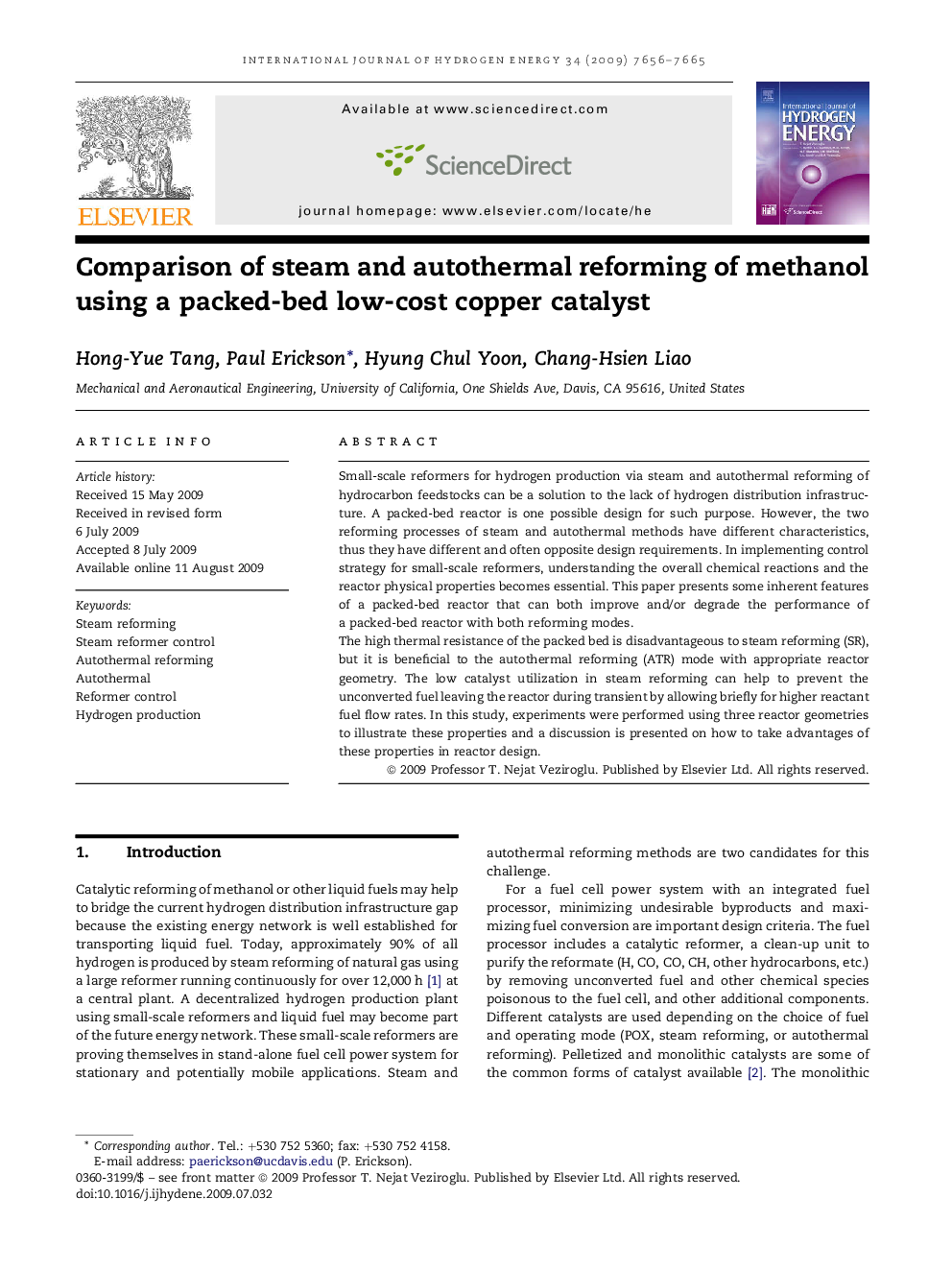| Article ID | Journal | Published Year | Pages | File Type |
|---|---|---|---|---|
| 1277407 | International Journal of Hydrogen Energy | 2009 | 10 Pages |
Small-scale reformers for hydrogen production via steam and autothermal reforming of hydrocarbon feedstocks can be a solution to the lack of hydrogen distribution infrastructure. A packed-bed reactor is one possible design for such purpose. However, the two reforming processes of steam and autothermal methods have different characteristics, thus they have different and often opposite design requirements. In implementing control strategy for small-scale reformers, understanding the overall chemical reactions and the reactor physical properties becomes essential. This paper presents some inherent features of a packed-bed reactor that can both improve and/or degrade the performance of a packed-bed reactor with both reforming modes.The high thermal resistance of the packed bed is disadvantageous to steam reforming (SR), but it is beneficial to the autothermal reforming (ATR) mode with appropriate reactor geometry. The low catalyst utilization in steam reforming can help to prevent the unconverted fuel leaving the reactor during transient by allowing briefly for higher reactant fuel flow rates. In this study, experiments were performed using three reactor geometries to illustrate these properties and a discussion is presented on how to take advantages of these properties in reactor design.
